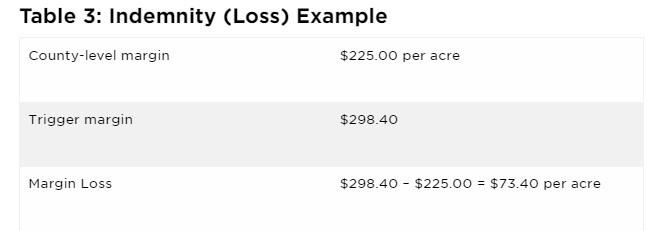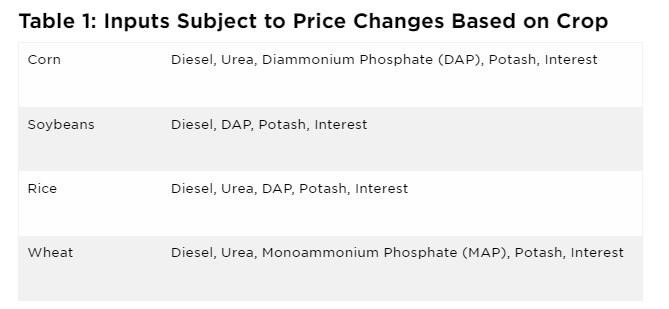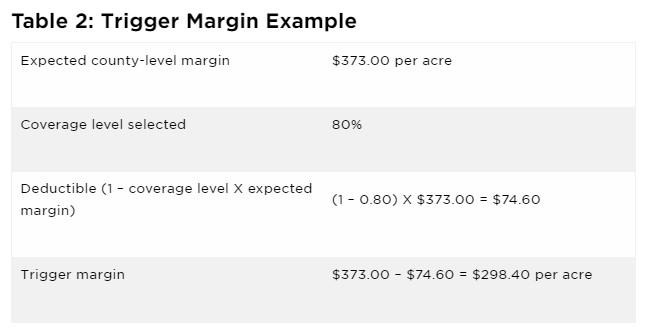By Scott Irwin and Joe Janzen
Department of Agricultural and Consumer Economics
University of Illinois
Following the 2022 US harvest, corn and soybean prices remain at historically high levels. Nearby futures prices at the close of trade on November 28 are $6.69/bushel for corn and $14.57/bushel for soybeans. Futures prices for the 2023 crop are slightly lower at $6.11/bushel for corn and $13.94/bushel for soybeans, but these too are elevated levels in historical terms. Crop marketing, planting, and other production decisions depend crucially on these price levels. In this article, we describe the current corn and soybean supply and demand balance based on recent USDA forecasts (See: farmdoc daily November 14, 2022). We consider factors that may lead USDA to adjust its projections for supply, demand, and price and offer revised forecasts for the 2022/23 marketing year.
How Did We Get Here?
Two major events in early 2022 created the conditions for the high and volatile prices observed this year and displayed in Figure 1. First, the South American soybean crop harvested beginning in January and February was well below expectations. Brazil soybean production in the 2021/22 marketing year was 12.5 million metric tons or 9% below the year prior with additional production declines in Argentina and other South American countries. Second, the Russian invasion of Ukraine tied up some old-crop supply inside Ukraine and generated significant uncertainty about future production in the Black Sea region. By May and June 2022, prices for delivery in fall 2022 peaked around $7.50/bushel for corn and $15.50/bushel for soybeans.
Since the summer of 2022, prices have moderated slightly. The Russia-Ukraine Grain Deal brought some tied up Ukrainian grain to world markets and eased concerns about global supply more generally. Yield prospects for the 2022 US crop declined moderately with limited price impact in late-summer 2022. Beginning in about September, corn and soybean prices moved sideways with old-crop futures prices in the range of $6.50 to $7/bushel for corn and $14-$15/bushel for soybeans.
Old-crop 2022 corn and soybeans have continued to be priced at a premium to the forthcoming 2023 crop. Old-crop prices in Figure 1 are always above concurrent new-crop prices. This sustained inverse suggests price prospects for the 2023 crop are poorer than current 2022 prices as a larger global production response is possible in the medium term. Brazil corn and soybean production is particularly figured to rebound. The inverted term structure for prices is not a forecast; it does not imply that 2023 prices are expected to decline further, only that the market currently expects lower prices for the 2023/24 marketing year compared to 2022/23.

Old-Crop Supply and Demand Balance
The US corn supply and demand balance for 2022/23 tightened compared to 2021/22, mainly due to lower acres and yields. Figure 1 shows the latest projections for 2022/23 US supply and use as given in the November WASDE report. 2021/22 figures are presented for comparison. Most of the supply figures given in the table are close to the likely final numbers as harvest is nearly complete. Corn planted acres for 2022 are estimated at 88.6 million acres, slightly below long-run average levels and well below the level observed in 2021. Yield is projected to be 172.3 bushels/acre, below 2021 and significantly below USDA’s initial projection for 2022 of 181 bushels/acre based on long-run trends in US corn yield. National corn yield approximately eight bushels/acre below trend reflects significant production difficulties in the Western Corn Belt and Great Plains states. We expect these production numbers to move only slightly between now and USDA’s final estimates so our forecast in the final column of Table 1 is identical to USDA for all supply variables.

There are notable challenges for 2022/23 US corn demand. While USDA already projects total US corn use will fall by about 800 million bushels from 2021/22 to 14,175 million bushels, we see at least two factors that should temper demand expectations further. First, ethanol use faces headwinds associated with the slowdown in the economy and associated drop in gasoline use. Signals have been mixed since last summer, with some months much lower than year earlier and some months even. The overall trend is towards lower ethanol use overall for 2022/23. At this point, the main question is the degree of softness.
Second, corn export sales are well below the pace necessary to sustain USDA’s forecast of 2,150 million bushels. Figure 2 shows corn export sales up to November 17, 2022 are about 699 million bushels while the previous 5-year average level is approximately 1,047 million bushels. Sales near this previous 5-year average level are necessary to reach the USDA forecast level. There is some recent optimism for corn exports given recent large sales to Mexico and improved prospects for barge traffic on the Mississippi River to facilitate grain movement to export terminals, but missing early export sales may be too large to be completely replaced with sales later in the marketing year.
For these reasons, we forecast corn use for ethanol and exports to be below recent USDA projections. We cut projected ethanol use by 75 million bushels to 5,200 million bushels and exports by a similar 75 million bushels to 2,075 million bushels. These further cuts in use lead to higher projected ending stocks for 2022/23. Whereas USDA currently anticipates the corn stocks-to-use ratio to be 8.3%, our lower use projections lead to a 9.5% stocks-to-use ratio. 9.5% is still historically low and price levels for old-crop corn are very likely to remain high in the short run. However, higher ending stocks mean higher beginning stocks for 2023/24 and an increased probability that the 2023 harvest will push prices lower.

We see less reason to differ from USDA’s 2022/23 soybean supply and demand estimates. Table 2 shows November WASDE forecasts for 2022/23, with the previous year presented for comparison. Our forecast for 2022/23 given in the third column does not differ from these numbers. US soybean yield, like corn, is somewhat below long-run trend levels, but production has not fallen as much because 2022 soybean acres were in line with levels seen in recent years. As mentioned above, further changes to the supply side of the balance sheet in the coming months are likely to be small.
Domestic crushing and export shipments of US soybeans each make up about half of all use and both show continued strength. Export sales to November 17 are similar to last year, above the previous 5-year average pace, and on track to meet USDA projections. A major wildcard is the large South American crop expected to be harvested in early 2023. In 2021/22, US soybean export sales surged in January and February when Brazil’s crop faltered. In a more typical year, the export sales pace slows in the new year. Time will tell what kind of year 2023 will be, but soybean prices remain high and will encourage production responses in Brazil and the US to increase stocks-to-use ratio from the current estimate for 2022/23 of 5.0%.

Conclusion
We see some need for tempered expectations for the 2022/23 US agricultural supply and demand situation, particularly for corn. Current high prices reflect historically tight projected ending stocks, but those tight conditions may be relaxed by both lower use and forthcoming global production. Corn ethanol production and corn exports for the remainder of 2022/23 may be lower than USDA projections. If more optimistic expectations for the South American harvest in early 2023 are realized, lower prices may be necessary to balance global supply and demand.
Source : illinois.edu